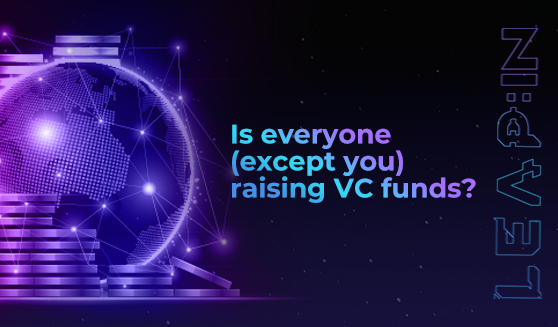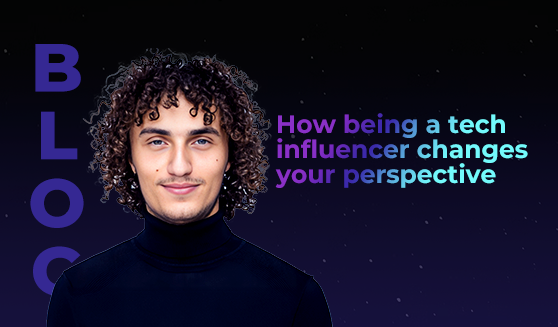
Each week, we share a selection of our favourite quotes from the innovators that contribute to LEAP. Read, absorb, learn, share; and join us at #LEAP23 for first-hand insights into the future of tech.
subscribe
This week we’re quoting…
Hamad Al Fahad (Managing Partner at Tajawoz)
Each week, we share a selection of our favourite quotes from the innovators that contribute to LEAP. Read, absorb, learn, share; and join us at #LEAP23 for first-hand insights into the future of tech.
What Al Fahad said:
“Pitching is only about one thing: it’s about getting attention. Don’t expect that at the end of your pitch an investor will take out their chequebook, sign you a cheque…pitching is about getting attention, that’s it. “
Really?
We know, we thought it too – isn’t pitching to investors about making money? About raising funds to sustain and scale your startup?
Getting an investment is the long game. But after listening to Hamad Al Fahad’s wisdom on the LEAP:In podcast, we’re willing to accept that if your VC pitch is focused on the money, it probably won’t make the money.
Because he’s right; your first pitch to an investor isn’t going to end with cash in the bank. At worst, it’ll end with…nothing. At best, it’ll end with a request for another meeting. And then there’s the middle ground: you captured the investor’s attention enough so that they’ll remember you, and the ground will be warm for future pitches when your company or idea has been further developed.
Not raising is not a disaster
To ease your anxiety about the idea of not raising when you pitch to a VC, here are a few companies that either never raised, or didn’t raise until they’d already started generating a lot of revenue:
- Shopify. Launched in 2006, this company didn’t raise funds until 2010, after four years of trading – at which point it received USD $7 million in a Series A round (December 2010) and then $15 million in a Series B round the following year (October 2011).
- Minecraft. The game itself was an unexpected success – and because of that success, founder Markus ‘Notch’ Perrson established his video development company, Mojang Studios, to build the infrastructure that would support Minecraft’s growth. In 2014, Notch announced in a blog post that he was leaving Mojang, having sold it to Microsoft for $2.5 billion. But what happened in between? No venture capital. None. Over $1 billion in profit with zero VC investment.
- Mailchimp. Most of us have used it at one point or another – but did you know that Mailchimp never raised VC funds? Ben Chestnut launched the company in 2001, because he’d started designing email templates for his own clients’ email newsletters. He realised other people might also want an easy way to automate their newsletter design, so he built a tool that would make it all very easy. And people used it. Twenty years later, on September 13 2021, Mailchimp was acquired by Intuit for USD $12 billion.
Be wary of the VC myth
Those three examples all tell us one thing: VC funding is not an essential component of startup success. Many high-performing businesses bootstrapped their way through growth for several years before even thinking about venture capital money.
And the reason they scaled so effectively without VC support is really very simple: they figured something out. They provided something that people wanted, and were happy to pay for.
The prevalent myth of our times is that startups can only be successful if they raise VC funds. But this just isn’t true (history proves it). This doesn’t mean you shouldn’t pitch, but it means that you shouldn’t pitch too soon – make sure you’ve figured something out before you go to investors, so you can stand out from the crowd and give them the ‘aha!’ moment that will make them remember you.
And if you’re pitching, get attention by:
- Asking for money to grow and develop (instead of asking for money to cover costs and stay afloat)
- Showing investors that you’ve realised something huge (and that your competitors haven’t realised that thing yet)
- Demonstrating a laser-focused understanding of your industry (especially the challenges your clients face, and how you are going to make those challenges a thing of the past)
- Showing investors why your business is so important and special (instead of just telling them that it is)
- Having a clear, confident, and detailed understanding of your numbers
- Showing them the journey you’ve already been on with this idea, this product, this company; and why now is the time for them to join you on that journey
And if you don’t raise?
Don’t panic.
You’re OK. Take a breath.
There are other ways to lead a business to success.
With this in mind, when you’re planning a VC pitch try not to stress about whether or not it’ll lead to investment. Instead, concentrate on a different question: will this pitch win attention? Is it captivating? Does it stand out from other pitches – and if not, how could you change that?
subscribe








